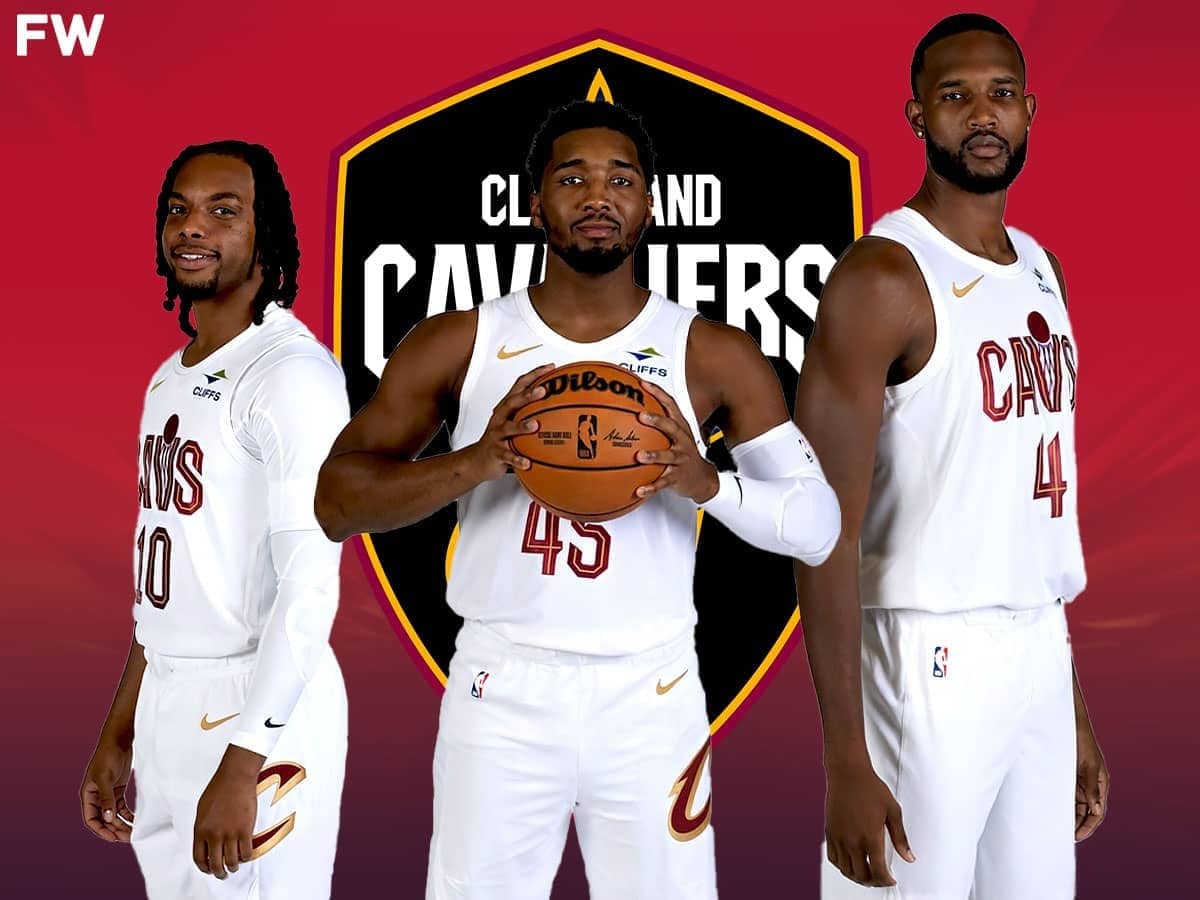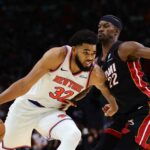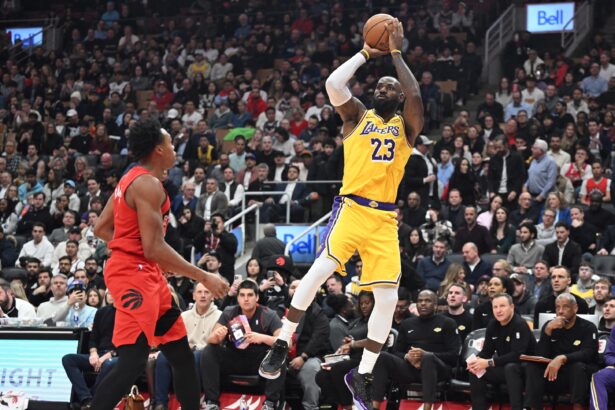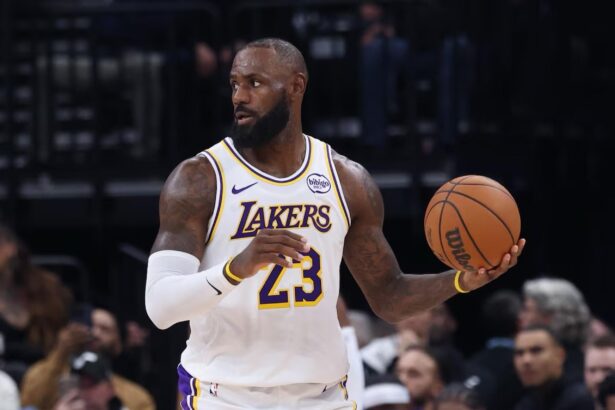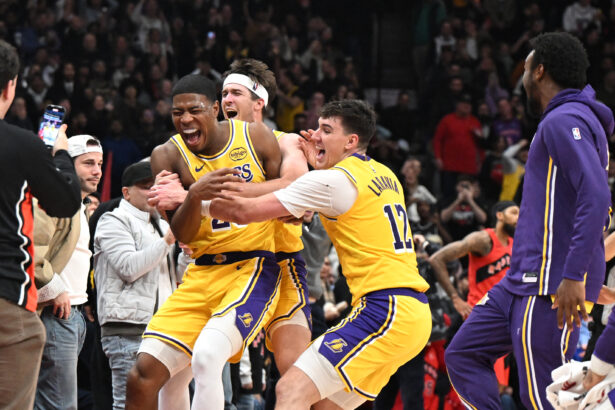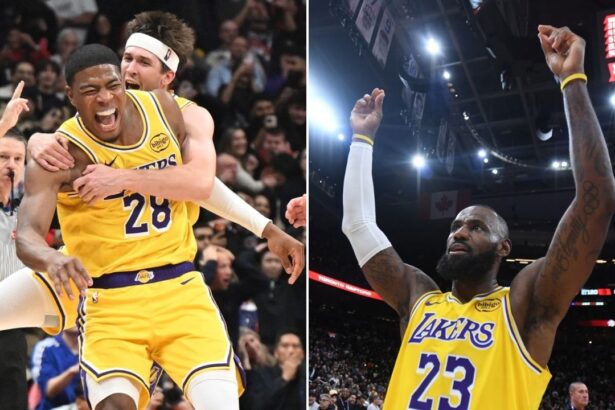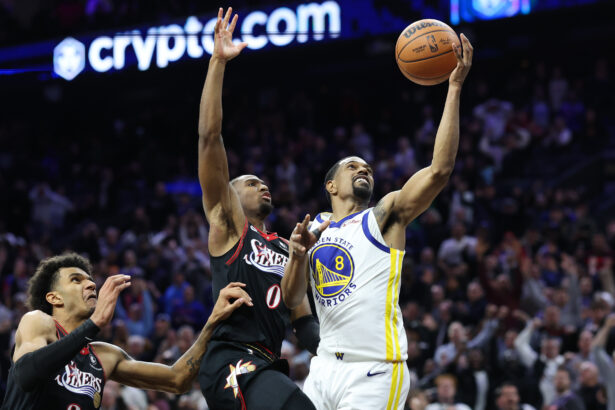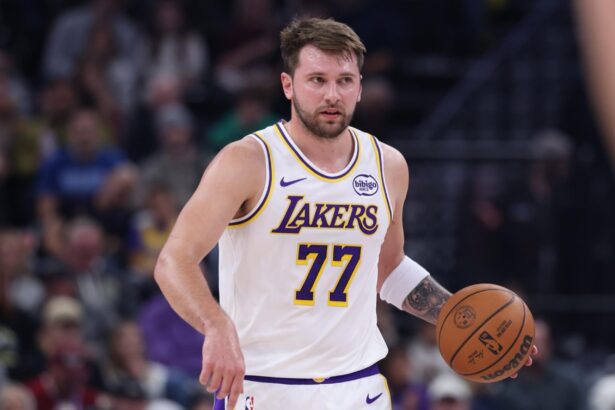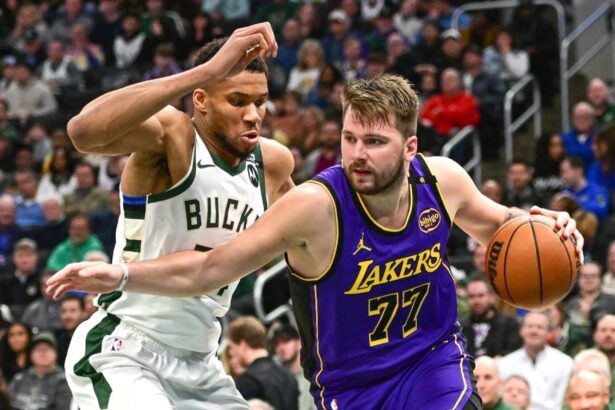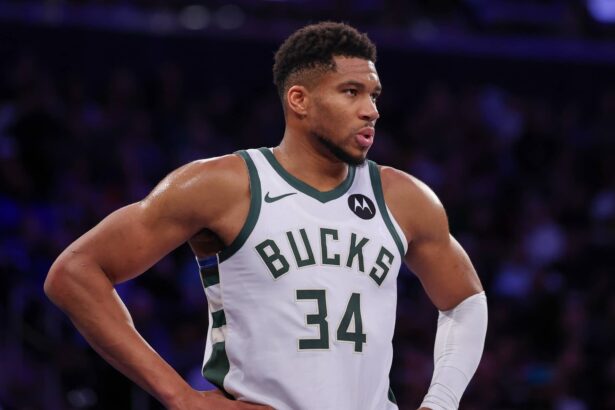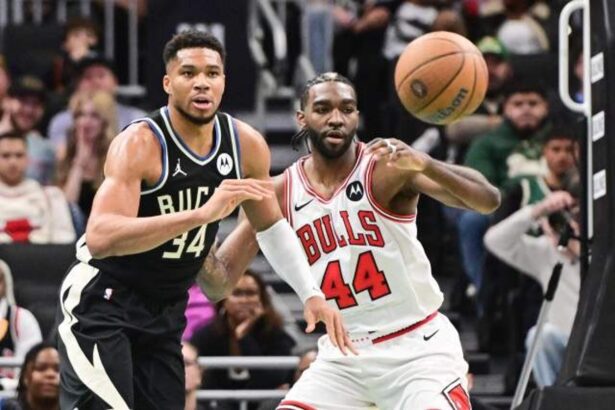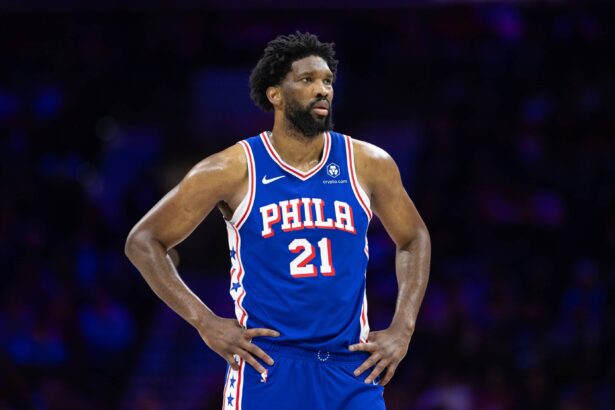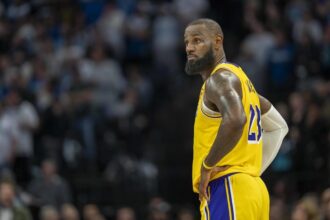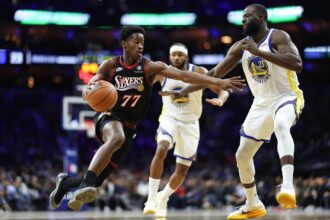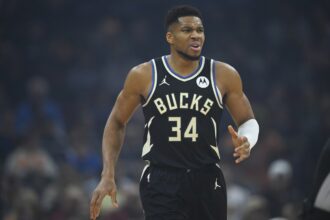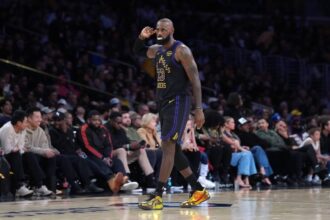The Cavaliers aren’t messing around this season. They went out last night and straight-up crushed the Lakers, ending with a 134-110 blowout that had the whole stadium buzzing. It wasn’t even close, and this win put them at an undefeated 5-0, with their best start in years. Evan Mobley was unstoppable, pouring in 25 points, while Donovan Mitchell added 24, dishing out 7 assists to keep the offense rolling smoothly. Jarrett Allen also played a massive role with 20 points and an impressive 17 boards, keeping the Lakers off the glass and making sure they controlled the paint.
New head coach Kenny Atkinson seems to have lit a fire under this squad, and they’re showing a mix of defensive hustle and offensive flow that just clicks. The Cavs look deep, disciplined, and ready to be a legit contender in the East this season. So the big question remains—are the Cavaliers for real, or are we seeing just another flash of potential?
1. Garland’s Steady Hand And Scoring Surge
Darius Garland has been the engine behind Cleveland’s smooth offensive rhythm. Averaging 17.8 points and 6.0 assists on an efficient 45% from deep, Garland’s ability to balance scoring and playmaking is setting the tone. He showcased his offensive upside against the Knicks, dropping a season-high 34 points, a performance that not only revealed his scoring potential but also highlighted his growth as a consistent shot creator. This offensive maturity is letting the Cavaliers rely on him to keep defenses stretched, opening up space for his teammates.
In his fifth season, Garland’s confidence in his role as a lead guard is clear. His shooting percentages are climbing, and his ability to run the pick-and-roll effectively makes him a nightmare for defenses to handle. This season, he’s also been more selective with his shot choices, leading to fewer wasted possessions and better scoring efficiency. When Garland orchestrates the offense at this level, it takes the pressure off Donovan Mitchell, allowing them to share offensive responsibilities smoothly.
Another key aspect of Garland’s game this season is his decision-making under pressure. His ability to control the game’s tempo, knowing when to push and when to settle, has matured significantly. This poise is especially critical for the Cavs, who can leverage Garland’s on-court vision and scoring to execute effectively against tougher teams. If Garland can maintain these numbers while minimizing turnovers, his playmaking will remain one of the team’s strongest assets moving forward.
2. Evan Mobley’s Offensive Breakout
Evan Mobley is proving he’s ready to step up as an offensive force this season, showing all the signs of a player reaching the next level. Mobley’s averaging 19.2 points, 8.2 rebounds, 1.2 steals, and 2.0 blocks—numbers that reflect his versatility and impact on both ends of the court. His scoring boost is especially notable because it’s filling a much-needed role in the Cavaliers’ lineup, allowing him to be a reliable second or third scoring option behind Donovan Mitchell and Darius Garland. This increased role is also key to the Cavs’ goal of building a well-rounded offense that can compete in the postseason.
A significant part of Mobley’s offensive leap is his expanded range and confidence to shoot from mid-range and beyond. While he took a conservative 10.7% of his shots from three last season, Mobley’s been encouraged to stretch the floor more this year. This adjustment makes him a better fit alongside center Jarrett Allen, who dominates inside, and it gives Cleveland more options to spread out defenses. The added floor-spacing complements the Cavs’ guards and has the potential to add a new dimension to their offensive sets.
Kenny Atkinson’s arrival as head coach is also a factor in Mobley’s development. Known for working well with young talent, Atkinson has put Mobley in situations that allow him to play to his strengths, whether that’s rolling to the rim, scoring from the elbow, or using his agility to create mismatches. With Mobley’s athleticism and shot-blocking already making him a defensive star, his offensive growth is set to round out his game, positioning him as one of the league’s most promising two-way big men this season.
3. A Faster Pace With Atkinson At The Helm
Under new head coach Kenny Atkinson, the Cavaliers have picked up the pace and added a fresh energy to their offensive strategy. Atkinson’s system emphasizes quicker ball movement, pushing transition opportunities, and increasing tempo, making Cleveland far more aggressive on the break. This faster style is bringing out the best in their young roster, which has the athleticism to excel in a high-speed offense. It’s a change from their previously slower, defense-oriented approach, aligning well with modern NBA trends.
In their recent win over the Lakers, the Cavs showcased this fast-paced approach, breaking away early with a first-quarter lead of 19 points, spurred by back-to-back three-pointers from Donovan Mitchell. By getting shots off faster and creating early offense, they’re taking advantage of defenders who are still setting up. This increased tempo is not only making Cleveland tougher to guard but also giving players like Garland, Mitchell, and Mobley more open looks and opportunities to drive the offense.
Atkinson’s influence is also evident in their enhanced three-point volume, as he encourages spacing the floor to open up both driving and passing lanes. This offensive shift is paying off so far, helping the Cavaliers capitalize on their athleticism and depth. With this approach, Cleveland is creating more scoring chances and forcing opponents to adjust to their faster rhythm, which has been a crucial factor in their hot start to the season.
4. Three-Point Efficiency And Volume
The Cavaliers are making a name for themselves this season as a serious three-point shooting threat, led by Donovan Mitchell and Darius Garland’s impressive efficiency from beyond the arc. Currently, Mitchell averages 3.2 three-pointers made per game on 38.1% accuracy, while Garland is just as deadly, hitting 3.0 threes per game at an elite 45.5%. This dynamic backcourt’s ability to connect from deep forces defenses to extend out, creating more room for Evan Mobley and Jarrett Allen to operate inside.
Supporting the backcourt, Georges Niang and Dean Wade have been reliable contributors off the bench, each averaging about 1.5 three-pointers per game on decent accuracy (around 37.5%). Sam Merrill is also adding consistent firepower from deep, giving Cleveland additional depth in their perimeter shooting. The collective effort is propelling the Cavaliers to a team-wide three-point shooting percentage of 41.1%, putting them as the top team in the league in this category.
With Atkinson at the helm, the Cavaliers are taking 36.0 threes per game, a clear shift toward modern spacing principles. This high-volume shooting approach doesn’t just add points—it’s transforming their offense by making it harder for opponents to close out effectively on their shooters, ultimately leaving them more vulnerable to drives and cuts from players like Mitchell and Garland. This uptick in three-point attempts and makes is a big part of what’s fueling Cleveland’s explosive start, adding an entirely new layer to their offensive identity and keeping defenses on high alert.
5. Bench Depth And Defensive Clamps
The Cavaliers’ bench has been a critical component of their strong start, injecting energy, versatility, and defensive grit. Caris LeVert is emerging as a standout off the bench, averaging 11.8 points and 3.8 rebounds, shooting a remarkable 64.3% from deep. His offensive flexibility makes him a valuable sixth-man presence, offering both scoring and playmaking when Garland or Mitchell rest. Alongside LeVert, Dean Wade has also been a strong presence, shooting 33.3% from three and bringing solid rebounding, which adds size and spacing from the perimeter. Other pieces like Ty Jerome and Sam Merrill add shooting depth, helping sustain the offensive flow even with starters out.
On the defensive end, the Cavaliers are showing why they were a top defensive team last season. Jarrett Allen and Evan Mobley continue to anchor the paint, with Mobley averaging 2.0 blocks per game, creating a formidable wall against opposing offenses. Their presence allows perimeter defenders like LeVert and Mitchell to take risks, pressuring ball-handlers without leaving the rim exposed. The result has been a defense that consistently forces low-percentage shots and limits easy baskets, keeping opponents under pressure throughout the game.
This defensive depth, combined with Atkinson’s fast-paced offensive schemes, has made Cleveland’s rotations stronger and more unpredictable. The defensive consistency from players off the bench ensures there’s minimal drop-off when substitutions are made, allowing the Cavaliers to maintain high intensity on both ends. This approach positions them as the 4th best defensive team this season, a true testament to the team’s growth and depth.
Can They Maintain This Level And Be The Surprise Of The East?
The Cavaliers have all the ingredients for a deep playoff run, but the big question is whether they can maintain this early level of play throughout a grueling season. With a 5-0 start, they’ve surprised fans and critics alike, showcasing an impressive mix of offense and defense under Kenny Atkinson. However, sustaining this momentum means addressing some challenges. Health is a significant factor—last season, both Garland and Allen dealt with injuries that affected the team’s consistency. The Cavaliers will need to manage their core players’ minutes carefully to keep them fresh and avoid burnout as they move toward the playoffs.
Offensively, Atkinson’s pace-and-space system has been a game-changer, allowing the Cavaliers to play faster and more efficiently. Their three-point shooting is currently at the top of the league, with both volume and efficiency up significantly from previous seasons. But can their shooting stay consistent? Teams will likely adjust their defensive strategies against the Cavaliers as the season progresses, which could challenge their perimeter shooters. Mitchell and Garland will need to keep finding ways to create open looks, while role players like Dean Wade, Georges Niang, and Caris LeVert must maintain their shooting touch to keep the offense unpredictable.
Another key factor is the Cavaliers’ bench, which has been a pleasant surprise this season. LeVert, Wade, and Jerome have contributed solid minutes, helping sustain both offensive and defensive intensity when starters rest. Yet, the bench depth is a potential vulnerability. The Cavs are leaning on some young and newer players who haven’t proven themselves over an 82-game season. If injuries or fatigue hit, Atkinson may find himself having to juggle lineups creatively to maintain the current level of competitiveness.
Defensively, the core of Mobley and Allen anchors one of the best interior defenses in the league, but they’ll need to keep up this intensity, especially against high-powered offenses in the Eastern Conference. Teams like the Bucks, Celtics, and 76ers have multiple scoring threats that will test their defensive schemes. Mobley’s development as a versatile two-way player could be crucial in matchups where defensive switches and adjustments are needed. His ability to step out on the perimeter while still protecting the rim could be the X-factor that keeps the Cavaliers in contention.
If the Cavaliers can keep refining their three-point efficiency, maintain defensive pressure, and handle the physical demands of the season, they could indeed be the surprise team of the East. It’s a tall order, but Atkinson’s system, combined with their depth and defensive prowess, gives them the foundation to disrupt the conference’s power balance. Their early performance isn’t a fluke; it’s the product of calculated improvements and player development.

